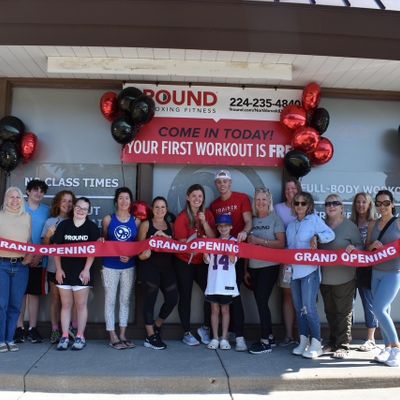How Much Water Do You Really Need

What if we told you everything you’ve been told about staying hydrated is probably just a myth? Surprisingly, this may be the case, as there’s a lot of confusion on the topic, even from a scientific standpoint. But one thing is certain—you can finally forget about that 8-cups-a-day rule and focus on learning how much water you really need per day based on the established facts.
Water is Essential
You probably learned this back in elementary school, but water is a primary component that makes up around 50-70 percent of your body weight, and it’s essential for carrying out many of your body’s daily functions, including:
- Temperature regulation
- Lubricating and cushioning joints
- Expelling waste through urination, perspiration, and bowel movements
- Aiding in digestion
- Carrying nutrients and oxygen to your cells
- Normalizing blood pressure
- Maintaining electrolyte balance
What Happens When You Don’t Get Enough Water
When your body experiences a lack of water, it can lead to dehydration. Dehydration occurs when your body doesn’t have enough water to perform the necessary daily functions that help keep you alive. Unfortunately, most people tend to ignore the early signs of dehydration, such as extreme thirst, headaches, and fatigue, until the problem escalates to a point of needing medical attention.
More severe symptoms of dehydration include less frequent and dark-colored urination, confusion, and dizziness. These symptoms also vary with age, so for younger children or infants, look out for dry mouth, no tears when crying, no wet diapers for three hours, sunken eyes or cheeks, and listlessness or irritability. If not treated, severe dehydration can be very dangerous and potentially life-threatening.
How Much Water Do You Need?
Contrary to popular belief, there is no one-size-fits-all approach to hydration, in the same way, there’s no magical number of ounces you need per day to stay healthy. You can absolutely still follow the 8 cups a day rule if it encourages you to drink more water, but just know each person is unique, and someone may be fine with less or more water based on their individual needs.
Additionally, it’s important to note that drinking enough water per day will not make you healthy on its own, although it definitely doesn’t hurt. Staying hydrated, along with a healthy diet and exercise routine, is how you can ultimately conquer your health goals, so don’t forget this crucial part of the process!
The amount of water you need per day will vary based on many factors, including your body size, your activity level, and even your surrounding environment. For example, people who live in hotter, more humid climates may need to intake more water than someone who lives somewhere that’s cooler and dryer. Along those same lines, someone who exercises more often will likely need more water throughout the day than someone who is less active.
This also means your required individual water intake may change from day to day, depending on where you are and what you’re doing. For example, you’ll want to increase your water intake when traveling to tropical destinations in the summer or when you start exercising more often than you did before.
Additionally, it’s important to note that you do get around 20 percent of your daily water from your diet alone. Many of the foods we eat daily, especially fruits and vegetables, are mostly made of water. Also, a lot of the drinks you consume, including coffee, tea, or even soda, are still mostly made of water—however, you do want to try and limit sugary drinks to prevent excess calories in your diet. This is good news because it means you don’t need to obsess over water intake when a large amount of your daily ounces are coming straight from your diet.
Can You Drink Too Much Water?
Yes, you can drink too much water, especially when you try to cram in extra ounces in a short time period. Consuming too much water too quickly can overload your kidneys and cause a dilution of sodium in your bloodstream—this is called hyponatremia, a condition often seen in athletes who chug liquids before, during, or after a sporting event.
If your body reaches hyponatremia, your water levels start to rise, and your cells begin swelling. This can lead to many dangerous health problems, some of which are life-threatening. Luckily, this is a rare occurrence for most people, and the way to avoid it is to spread out your water intake throughout the day rather than trying to chug a bunch of water at one time.
How Do I Tell if I Need More Water?
The key to learning when you need more water is to listen to your body—it will tell you when you need to hydrate by making you feel thirsty. If you rarely feel thirsty, you’re probably intaking enough water. Additionally, you can use the urine test to judge your hydration levels. If your urine is colorless or pale yellow, you’re likely getting enough fluids in to stay hydrated.
Tips to Help You Stay Hydrated
If you’re like most people, and you struggle to drink enough water throughout the day, then here are a few tips that may help:
- If you don’t enjoy drinking plain water, then you can make fruit-infused waters or buy sparkling water as an alternative to stay hydrated. Try to avoid sugary drinks like soda or tea to prevent excess calories in your diet.
- If you are constantly on the go and forget to drink water, invest in a portable, refillable water bottle to always keep with you. Additionally, you can set a goal for the number of refills you want to drink per day to try to encourage you to use your new water bottle.
- If you are someone who carries a water bottle with you, but you still forget to drink it, then you can set a timer or a reminder on your phone to encourage you to drink water at certain times throughout the day.
- Plan ahead when you know you’ll be doing a lot of physical activities or staying out in warmer temperatures and pack your water bottle with you the night before, so you won’t forget it.


